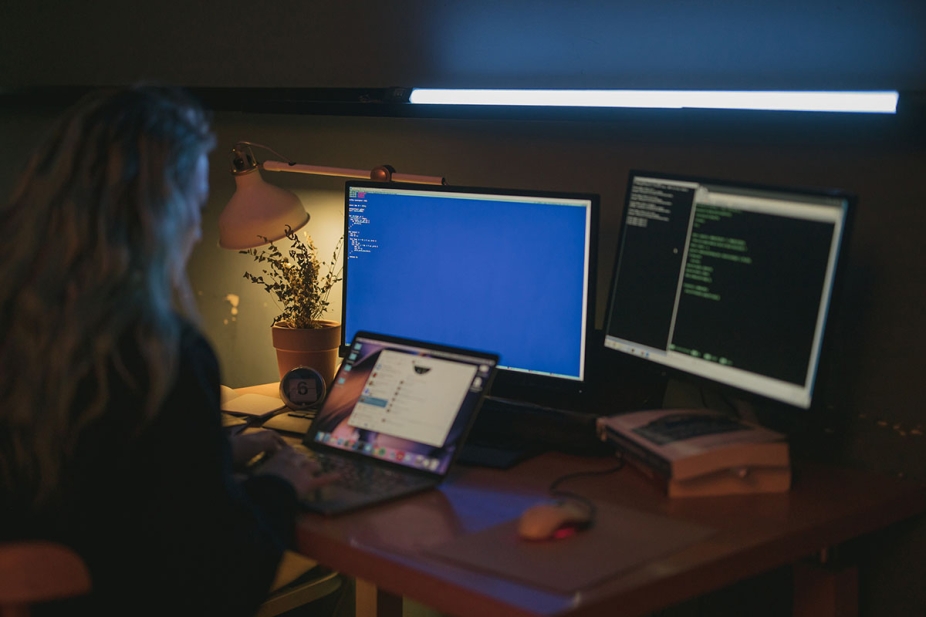CESM Tutorial 2022
The 2022 CESM Tutorial will take place 08 - 12 August 2022. At this time we are planning to have the 2022 Tutorial in-person, however we are aware there is continued uncertainty associated with the COVID-19 pandemic. Specific details regarding the Tutorial content and format will be posted to the website listed below as soon as they are available. In the case that we are unable to hold the Tutorial in-person we will return to online only format with activities occurring during a 9 am to 3 pm MDT window including live lectures and practical sessions.
The CESM Tutorial will consist of:
- A mix of live and pre-recorded lectures on simulating the climate system. Students are expected to watch the pre-recorded lectures before the corresponding live Q&A session;
- Pre-recorded practical sessions on how to run CESM, modify components, and analyze the output. During the tutorial week there will be daily live office hours dedicated to help students with any potential problems encountered during the practical sessions. Again, students are expected to complete the practical sessions before the corresponding office hours;
The CESM Tutorial is targeted at the graduate student level (2nd year and beyond), but postdocs, research scientists, and faculty members are also welcome to apply. We are committed to providing equal opportunity for all applicants regardless of race, age, creed, color, religion, national origin or ancestry, sex, gender, disability, veteran status, genetic information, sexual orientation, gender identity or expression, or pregnancy.
Acceptance criteria
- Balance attendees across institutions
- Project descriptions that fit with broader CESM goals and activities
- Preference given to early career graduate students, though we will aim for a mix of graduate students, postdocs, early career research scientists, and faculty.
We very much encourage applications from students from diverse backgrounds of all kinds.
Prerequisites
Please complete the following activities to ensure you are prepared for the tutorial. Suggested activities include completion of a Unix and a Fortran lessons.
Account set up homework
Description: This homework is meant to ensure that your account on Cheyenne is ready for the tutorial. If you need any clarification while following the exercises, please contact Gustavo Marques (gmarques@ucar.edu). For computer related assistance, including not being able to log into Cheyenne, please contact help@ucar.edu and provide a description of your error in the email.
The expected length is 10-20 minutes.
Homework Link: Homework
Unix tutorial
Description: This module, from The COMET Program, will help those new to computing in the geosciences become familiar with working in a command line environment. You can learn about the basics of Unix file structures, how to navigate in a Unix environment, and you'll get to practice creating, storing and searching for files.
The expected length is 15-30 minutes for users with some Unix experience, and 30-60 minutes for novices.
Lesson Link: https://www.meted.ucar.edu/ucar/unix
Introduction to Programming & Fortran Lesson
Lesson Description: This 2-unit module from The COMET Program introduces users to scientific programming structures and methods and the history, basic syntax and functionality of Fortran, which makes up much of CESM.
Recommendations for Module Use:
- Users who have little to no programming experience should take both units in full
- Users that do have some programming experience, such as a web-based language like HTML, but have limited experience in scientific programming, such as a C-based languages, should start with unit 1 and may find they can complete it quickly. While unit 2, covering Fortran and CESM Fortran examples, should be taken in full
- Users that have significant scientific programming experience (C-based languages, for example) can safely start in unit 2, which covers Fortran and CESM Fortran examples
- Users that have significant programming experience in Fortran can likely begin at the "Fortran and CESM" subsection (near bottom of table of contents) in unit 2
Lesson Link: https://www.meted.ucar.edu/ucar/fortran
Participants
Below are the participants of the 2022 CESM Tutorial.
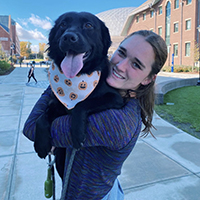
Mary Grace Albright
My name is Mary Grace, and I'm a second year PhD student in the Department of Earth Sciences at the University of Connecticut working with Dr. Ran Feng and Dr. Clay Tabor. My research explores the use of high resolution simulations and machine learning to understand hydroclimate changes in the North American Southwest during periods of elevated atmospheric CO2. I am interested in determining how weather systems change under warmer intervals in the Earth's history so that we might gain a greater understanding as to how they could change in the future. In my free time, I enjoy long walks with my dog, going to Orangetheory, and exploring New England.
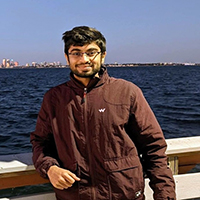
Namit Choudhari
I am entering my second year of PhD program at the University of South Florida, Tampa (School of Geosciences). Dr Yasin Elshorbany advises me. My research interests include seasonal to decadal historical and future simulations of meteorological variables, focusing on reducing the bias and uncertainty within the CESM model. I am also interested in monitoring past, present, and future extreme events like droughts, heatwaves, and extreme precipitation under different RCP scenarios and global warming thresholds with a focus on frequency, magnitude, duration, and timings of the period. Before my PhD, I did my BS in Geology and MA in Geography.

Brendan Clark
I am a PhD candidate in atmospheric science at Rutgers University. I am currently researching impacts of climate intervention (geoengineering) on crops and ecological systems. I would like to use CESM todesign a climate intervention strategy to minimize harmful impacts on regional crop production. In my free time I enjoy hiking with my dog, biking, camping, and kayaking.
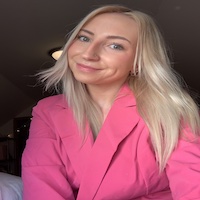
Taylor Dolan
I am a second-year Atmospheric Science Master’s student at the University of North Dakota. I am currently working with Dr. Aaron Kennedy in the Department of Atmospheric Sciences. Prior to coming to North Dakota, I earned my B.S. in Meteorology at the State University of New York at Oneonta in 2020. My research involves investigating the El Niño Southern Oscillation in the CESM2-LE and identifying atmospheric patterns using Self Organizing Maps in the Great Plains of the United States. I plan on extending this topic further, as I continue my academic career with my Ph.D. Through this tutorial, I am excited to learn more about the CESM and connect with other scientists with similar interests. I am currently in the bowling league at my university and I love to explore new places in the U.S.

Sean Cohen
I am a PhD candidate at Columbia University studying tropical precipitation. I focus on using various parameterizations of large-scale dynamics in single column atmospheric models (SCAM6) to study the response of tropical precipitation to various imposed perturbations.
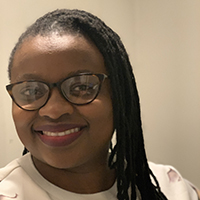
Ezinwanne (Zinny) Ezekannagha
Zinny is a PhD student in the Department of Biological Science at Texas Tech University Lubbock. She earned an M.Sc in Environment, Society and Sustainability from the University of Cape Town in 2020. Her interests are in increasing biological realism of Earth system models to better test ecological theory and make better climate predictions. Her current research involves using modeling approaches to examine the impact of global change on photosynthetic acclimation in C3 and C4 plants. She will be using eco-evolutionary optimality theory, in combination with ground observations and satellite observations. Aside research, she enjoys travelling and hiking.
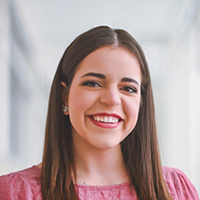
Savannah Ferretti
Savannah Ferretti is a second-year PhD student in the Department of Earth System Science at the University of California, Irvine. She works with Dr. Michael Pritchard and Dr. Jane Baldwin to understand the controls on tropical precipitation, and how these factors might change rainfall patterns in a warmer future climate. Currently, Savannah is investigating drivers of precipitation forced by the Western Ghats mountain range in India, in hopes to better understand the impacts changing precipitation will have on regional populations.

Robert Ford
I am entering my second year as a PhD student in the Department of Atmospheric & Environmental Sciences at the University at Albany, SUNY. I am generally interested in climate change, dynamics, and modeling. My current research involves using climate models to investigate the "pattern effect", which refers to the coupling of patterns of ocean heat uptake (and sea surface temperature), radiative feedbacks, and climate sensitivity. Besides research, I enjoy playing stringed instruments and video games, as well as reading.

Laura Gray
Laura Gray is a second-year PhD student in the Department of Civil and Environmental Engineering at the University of Illinois Urbana-Champaign, where she works with Dr. Ashlynn Stillwell and Dr. Lei Zhao. She has a particular focus in urban studies on the benefits associated with green stormwater infrastructure (GSI), in addition to how GSI can be represented in CESM to understand its performance across a wide variety of locations. Outside of research, Laura can frequently be found haunting local coffee shops, trying her best to climb at the bouldering gym, or spending time with friends.
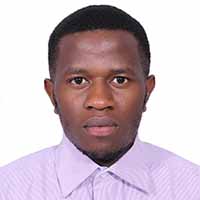
Thomas Kavoo
I am a first-year graduate student at the College of Forestry, Wildlife and Environment, Auburn University. I have a background in Earth science with a major in Hydrology and Water Resources Management and a Master of Science in Water Engineering. I am interested in climate change and hydrology with a specific focus on managing extreme weather events such as flooding and drought. Currently, my research investigates climate-vegetation interaction and their impacts on water resources to address regional water cycle projection uncertainties within the southeast United States.

James A. King
I'm a climatologist, currently in my 2nd year of postdoc at the University of Sheffield, UK, working with Dr Maria Val Martin and Dr James Weber. My current research uses Earth System models to investigate potential unforeseen consequences of so-called 'nature-based' approaches to climate change mitigation. In short, if we try and plant our way out of climate change, what happens to the atmosphere beyond just reducing CO2? Before starting this project, I completed BA and DPhil (PhD) degrees in Geography at the University of Oxford. My doctoral work investigated the reasons behind divergent climate model projections of future rainfall in tropical East Africa, with a view to improving their reliability. Outside of science (and climate policy), my interests include choral music, punk rock, playing squash, and my cat Cocoa. I'm originally from the New Forest, on England's south coast.
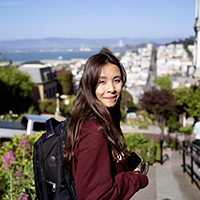
Yan-Ning Kuo
I'm about to be a second year PhD student working with Flavio Lehner at the Department of Earth and Atmospheric Sciences in Cornell University. My research interests encompass hydrologic responses to climate variability and change, especially teleconnection from ENSO. Currently, I'm working on entangling the attribution for regional precipitation changes, with a combination of linear inverse model and the AMIP setup simulations.
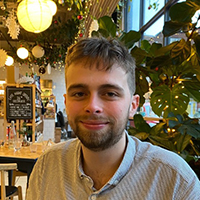
Josh Lanham
I am a PhD student working on polar stability at Imperial College, London with Dr. Ali Mashayek and Prof. Martin Siegert. I am working as part of the Science and Solutions for a Changing Planet (SSCP) Doctoral Training Partnership, run by the Grantham Institute for Climate Change and the Environment. My work is focused on high-resolution modelling of heat fluxes under Antarctic ice shelves and the stability of these regions to climate change. I am also interested in the large-scale circulation response to high latitude ice melt, with a particular focus on the role that turbulent diapycnal mixing plays in setting the strength of the overturning circulation.

Jaewon Lee
I just finished my first year as a Ph.D. student in the Department of Earth and Environmental Science, Columbia University/Lamont-Doherty Earth Observatory. I work on stratospheric ozone intrusion with Yutian Wu. I love understanding interactions within the atmosphere from dynamics perspective. I am currently using WACCM6 data and am interested in learning how to design experiments with CESM. I just started learning tennis and love new experiences such as friends, food, and fantastic nature like in Boulder.
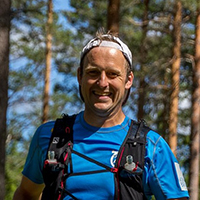
Andrew Lowry
I am a PhD candidate in physical geography at the University of Queensland, Australia. My research will use CESM to provide boundary conditions for downscaled modelling focussed on the paleoclimate of Australia. My research will attempt to answer the question, what was the climate like for the first Australians when they arrived in Australia around 60kBP. In my spare time I like to go running if I’m not chasing my two children around.

Oghenekevwe Oghenechovwen
Oghenekevwe Oghenechovwen is completing his MSc in Earth and Ocean Sciences at the University of Victoria Canada, where he uses climate model simulations and observations to study research problems in coupled climate dynamics of the Earth. His current research focuses on the impact of cross-equatorial ocean heat transport — which is facilitated by theAtlantic Meridional Overturning Circulation — on regional climate and precipitationsensitivity. Kevwe has a Bachelor’s in Meteorology from the Federal University ofTechnology Akure, Nigeria. He enjoys group travelling, reading fiction, board games, andmemes.

Youwei Ma
I am going to be a second-year PhD student in the School of Marine and Atmospheric Sciences at Stony Brook University working with Dr. Christopher Wolfe and Dr. Kevin Reed. My research is focused on investigating the role of the tropical cyclone in global-scale circulation and the role of ocean circulation in energy transport and tropical variability, and how this impacts the regional tropical cyclone activity based on an idealized fully coupled climate model within the CESM.
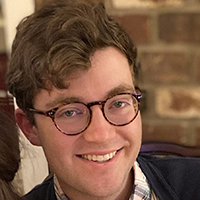
Michael Needham
I am a senior Ph. D. student at Colorado State University in the Department of Atmospheric Science. My research is focused on large-scale energy transports under various forcings, and I have recently become interested in how anthropogenic aerosols alter large-scale heat and moisture transport through their effect on the Earth’s radiation balance. I have also become involved in a paleoclimate project comparing simulated oxygen isotopes from the isotope-enabled version of CESM to Cenozoic observations across continental Eurasia. I defended my M.S. thesis in January 2021 on the interactions between clouds, radiation, humidity, and tropical precipitation. Before that, I received my B.S. in Physics from Loyola University Chicago (of recent NCAA Men's basketball fame). I grew up in Kansas City, Missouri, and I currently live in Fort Collins, Colorado, with my wife Kelsey.
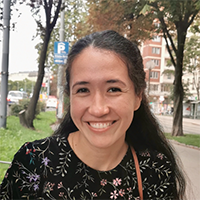
Emmie Le Roy
I am a first-year PhD student in the Program in Atmospheres, Oceans and Climate at the Massachusetts Institute of Technology. My current research investigates the impact of climate variability on tropospheric ozone with the goal of constraining uncertainties in air quality modeling for decision-making. In my research I use output from climate models to drive simulations of a chemical transport model. I am also interested in multi-decadal hydroclimate variability in Southeast Asia and other monsoon regions. Outside of work, I enjoy being outdoors, learning languages, and training with the MIT Sport Taekwondo club.
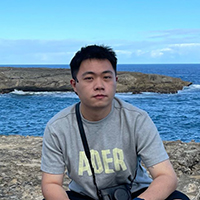
Zhe Li
I am currently a PhD candidate at the Department of Geography in the University of California, Santa Barbara. I study ocean-atmosphere interaction and climate dynamics especially in high latitudes using observations and global climate model simulations. My recent work focuses on how atmospheric winds and circulation trends influence the North Atlantic warming hole and AMOC.

Hamida Nadoya
Hamida is a PhD student of Geosciences at the University of Connecticut working with Dr. Clay Tabor. Her background is in Meteorology with focus on climate change. Her current research is in paleoclimate modeling where they employ iCESM to simulate and investigate rapid climate change during the Miocene Climate Optimum (~17-14 Ma) a period characterized by rapid warming ( ~7 - 8oC) relative to preindustrial. In combination with proxy records, they are also exploring how the South American Monsoon responded to this past warm period.
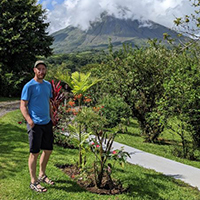
Justin Richling
I am an Associate Scientist with the Atmospheric Modeling and Predictability section of the Climate and Global Dynamics lab at NCAR where I am helping redesign our diagnostics package in Python for the CAM model output. The CESM tutorial is a great opportunity for me to understand running global models and I am excited to participate as an auditor. I hold a bachelor's degree in Physics with a minor in Atmospheric Sciences from the University Colorado, Boulder. I was born in Fort Collins, Colorado and I enjoy many of our outdoor activities here while playing ice hockey and finding time to spend in the garden!
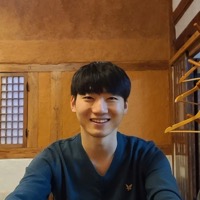
Jihun Ryu
l am a second-year Ph.D. student in the School of Earth Sciences and Environmental Engineering at GIST. My current research uses CMIP6 and observation data to analyze and evaluate the interannual variability of the model. And then, I want to know the difference in interannual variability change due to climate change. And next research will be a sub-seasonal prediction. It will be focused on Madden-Julian oscillation, and I want to run a climate model like CESM2 to evaluate the performance.
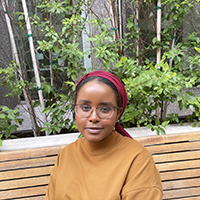
Halima Salah
Halima is a PhD student in Civil Engineering at Wayne State University. In 2017, Halima completed her BSc. in Civil Engineering with a minor in Environmental and Water Engineering from the American University of Sharjah (AUS) in Sharjah, United Arab Emirates (UAE). Her undergraduate and professional experiences prior to graduate school were in the Water Resources and Wastewater Treatment fields, in the U.S, UAE and Qatar. She currently works as a research assistant at the Huang research lab at Wayne State and is the 2022 Ralph Cicerone fellow at Atmospheric Chemistry Observations & Modeling (ACOM).
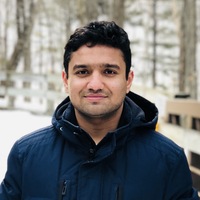
Bharat Sharma
Bharat Sharma is a Ph.D. candidate in the Department of Civil and Environmental Engineering at Northeastern University, Boston. He is currently working as an exchange graduate student at the Climate Change Science Institute at Oak Ridge National Laboratory with a concentration in understanding the impact of changing climate on the terrestrial carbon cycle. His work focuses on the detection of extreme events in carbon fluxes, under various forcing scenarios using observations and earth system models, and attribution to individual and compound climate drivers.
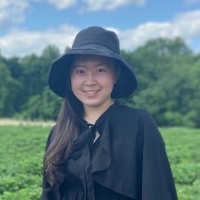
Quan Shen
I am a second-year PhD student in the Department of Geographics Sciences at the University of Maryland, College Park. I work with Dr. George Hurtt on ecosystem modeling and forest carbon monitoring. My current research focuses on the trees outside forests (TOF), including their dynamics and impacts on carbon fluxes. I hope to use ecosystem and earth system models to estimate the influence of TOF on climate mitigation. Apart from my research, I enjoy hiking, swimming, and hanging out with friends.
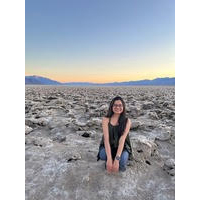
Shreya Trivedi
I am Shreya Trivedi and I am a PhD student at the department of Geography at UCLA. I completed my B.A. in Geography and M.Sc. in Environment Studies and Resource Management from India. Currently, my research focuses mainly on atmospheric circulations in Southern Oceans and its impact on various Sea-ice parameters. I am using climate models to study how well they simulate sea-ice in the Antarctic and for understanding the impact of extreme weather on southern oceanic sea-ice in the future. I have previously worked as a researcher in a climate modeling institute in India where the focus of my work was on understanding the impact of changing Antarctic sea-ice on South-Asian Monsoons. In my free time, I like to cook, learn and try out various new and different recipes. If not in my kitchen, you will find me outside in the natural world, travelling whenever I get time.
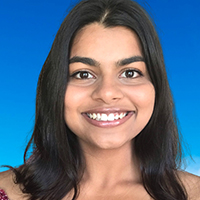
Vidya Venkatesan
I am an Astrophysics Ph.D. student at the University of California, Irvine. I work with Professor Aomawa L. Shields and explore the climate and habitability of exoplanets by combining observational data with computer models. Most habitable zone studies assume a circular orbit, but ~50% of confirmed planets have eccentricity greater than 0.1. As these planets spend a significant amount of time at large distances from their host star, they may have conditions where the atmosphere falls onto the surface and forms a variety of frozen species like carbon dioxide ice and water ice. My current NASA FINESST-funded project explores how the interaction between host star spectrum and surface ice composition shapes the fraction of an eccentric planet’s year over which it can be habitable using a suite of climate models. Besides research, I am also involved in outreach with the Rising Stargirls program. My hobbies include reading/watching science fiction, running, traveling, and one of my life goals is to become a certified scuba diver!
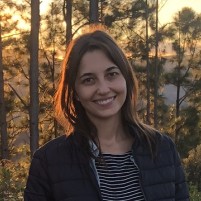
Laura Sobral Verona
I am a second-year PhD student in Physical Oceanography at the Oceanographic Institute of the University of São Paulo (Brazil). I am studying the responses of the Atlantic ocean-atmosphere system to volcanic forcing. Specifically, my focus is to identify how large eruptions can change the dominant mechanisms of interdecadal variability of the Atlantic subtropical subsurface circulation, how it is connected with the Tropical Atlantic variability, and, therefore, understand how the South American hydroclimate responds to these processes. For that, I use an ensemble of climate models simulations for the Last Millennium and experiments based on large volcanic eruptions such as Tambora. In my free time, I love outside sports like cycling, outrigger canoeing, and hiking. My other hobbies include aerial silk, studying french, and baking."
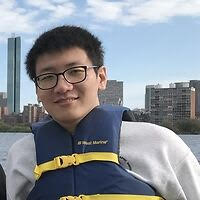
Peidong Wang
“I’m an upcoming fourth-year Ph.D. student at the Massachusetts Institute of Technology working with Prof. Susan Solomon on atmospheric chemistry. My research involves studying processes that may affect the stratospheric ozone “hole”. My recent work focuses on the role of wildfire in affecting the stratospheric chlorine heterogeneous reactions. In my spare time, I enjoy skateboarding and sailing along the Charles River.

Shawn Wang
I am a PhD candidate studying climate science at MIT and the Woods Hole Oceanographic Institution. My research is focused on understanding tropical climate dynamics on decadal to centennial timescales. Specifically I am interested in utilizing coupled climate models such as CESM in concert with observations and paleo-proxy reconstructions to constrain climate in the
Indo-Pacific region. In my free time, I enjoy playing tennis, skiing, and science fiction novels.

Xin Wang
Xin is a PhD student of Sustainability at Arizona State University. She is fundamentally interested in dryland landscape sustainability. Specifically, her research tries to understand the effects of landscape pattern changes and climate change on ecohydrological processes, ecosystem services and the overall sustainability of a dryland region. She expects to utilize a process-based land surface modeling approach to facilitate landscape sustainability modeling.

Yiwen Zhang
I am a second year Ph.D. student in Civil and Environmental Engineering at the University of Urbana-Champaign, working with Dr. Lei Zhao. My research focuses on advancing high-resolution urban climate modeling by combining both process-based CESM modeling and a transfer-learning-based approach. In my spare time, I very much enjoy the outdoors, watching anime and language learning, among trying all sorts of other activities.
